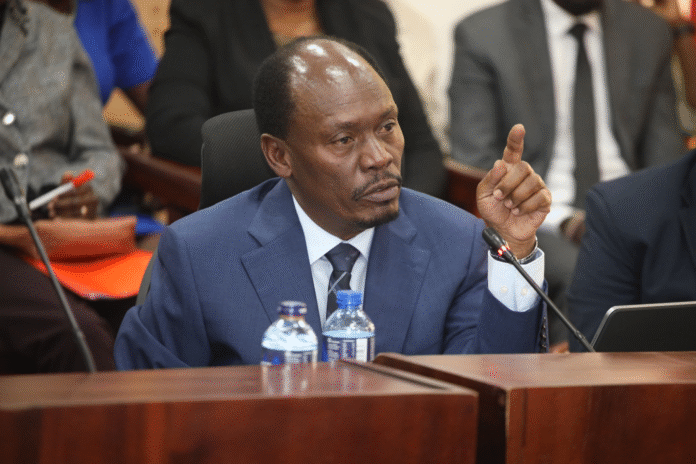
A controversial new media code proposed by the government has drawn sharp criticism from Members of Parliament, who argue it poses a major threat to press freedom and independent journalism in Kenya.
The code, which seeks to replace the current framework in place for over a decade, introduces stricter rules and definitions that lawmakers say verge on censorship. The proposal, spearheaded by ICT Cabinet Secretary William Kabogo, was presented before the National Assembly’s Committee on Delegated Legislation, prompting fierce opposition.
“This is a document we fully own with the media,” Kabogo told the committee, claiming the new rules were developed in consultation with media owners and editors. But MPs, led by Committee Chair Samuel Chepkonga, were unconvinced.
“The participation of the media in drafting the code does not override your responsibility to uphold the Constitution,” Chepkonga said.
Among the most contentious changes is a new definition of the term “claim” as any assertion presented as fact, opinion, or belief subject to verification unless drawn from protected documents. Lawmakers, including Kilgoris MP Julius Sunkuli, questioned the legal basis of such terminology.
Kathiani MP Robert Mbui accused the government of subtly attempting to muzzle the press. “What new ideas are you introducing by repealing the existing code? These are attempts to suppress the media in the guise of regulation,” he said.
Clause 4(g) of the code compels journalists to verify all statements before publishing, while 4(h) demands verification even for opinions—unless sourced from documents where verification is deemed impracticable. MPs said the clauses threaten real-time reporting and infringe on media freedoms.
Kigumo MP Joseph Munyoro raised concerns over delays in news coverage. “This kills the opinion of a source. If someone shares their view during a live show, how do you verify that in real time? It’s akin to banning live broadcasts.”
The new code also includes provisions requiring journalists to:
- Present all sides of an issue impartially.
- Preserve records of efforts to contact people named in stories.
- Clearly distinguish between facts, opinions, and conjecture.
- Accurately reflect story content in headlines, citing sources or using quotation marks for allegations.
Additionally, the code introduces editorial transparency measures, including disclosure of sponsored content and AI-generated material, which must be reviewed by a human editor before publication.
Of particular concern to broadcasters is a mandatory seven-second delay on all live content. “Seven seconds is an international standard,” said Media Council of Kenya CEO David Omwoyo, defending the clause. “In conflict reporting, delays of 21 seconds to a minute are common.”
The proposed rules would also hold media platforms liable for hate speech disseminated through them, with penalties of up to Sh1 million in fines or one year in jail for violators. Media owners and editors would also be personally liable.
Despite Omwoyo’s defense, MPs warned that the regulations, unless heavily revised, would be rejected. “You have not shown evidence that the CS can amend the code unilaterally,” Chepkonga noted, referring to Section 45(2) of the Media Council Act.
As Parliament weighs its next move, pressure is mounting from both civil society and journalists who see the code as a potential rollback of hard-won media freedoms in Kenya.






